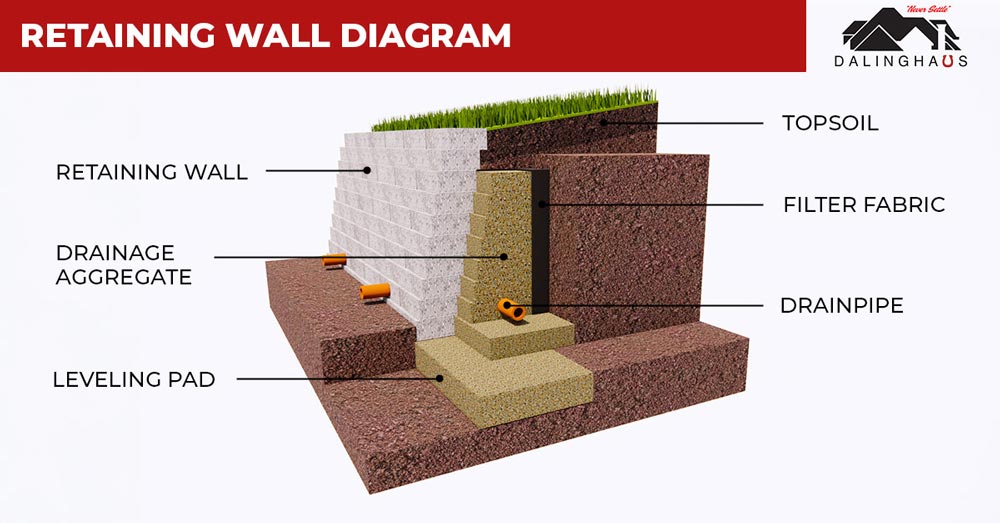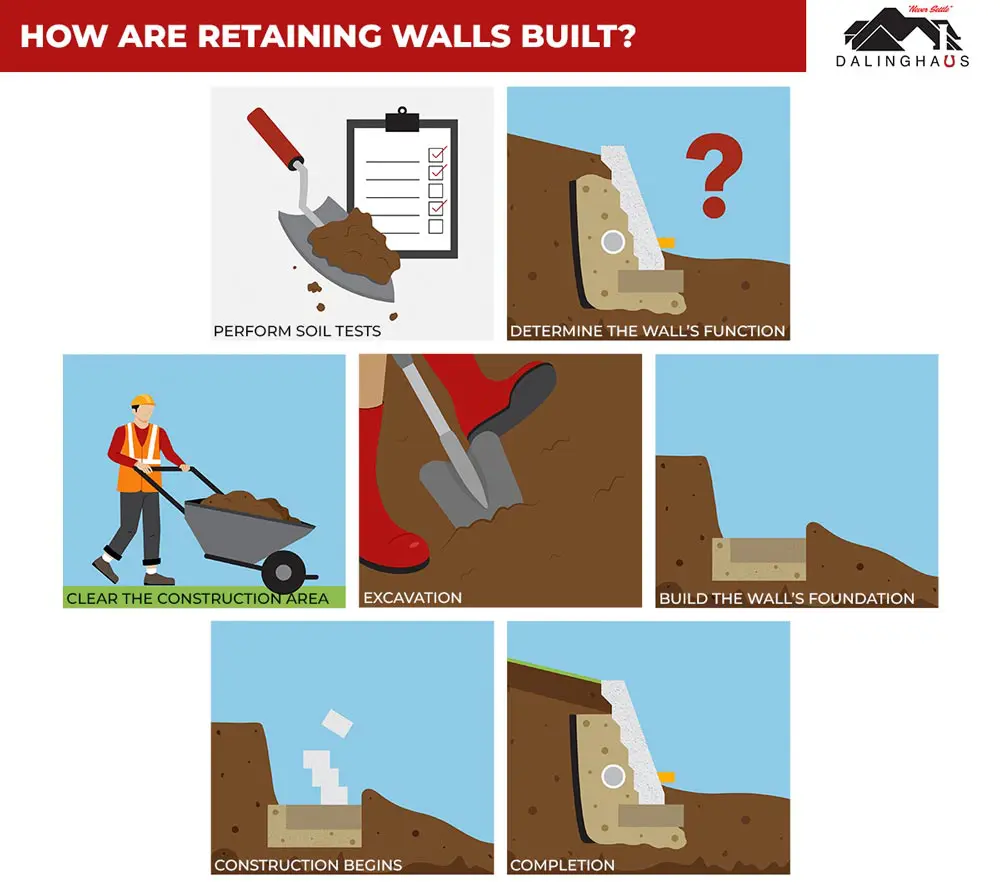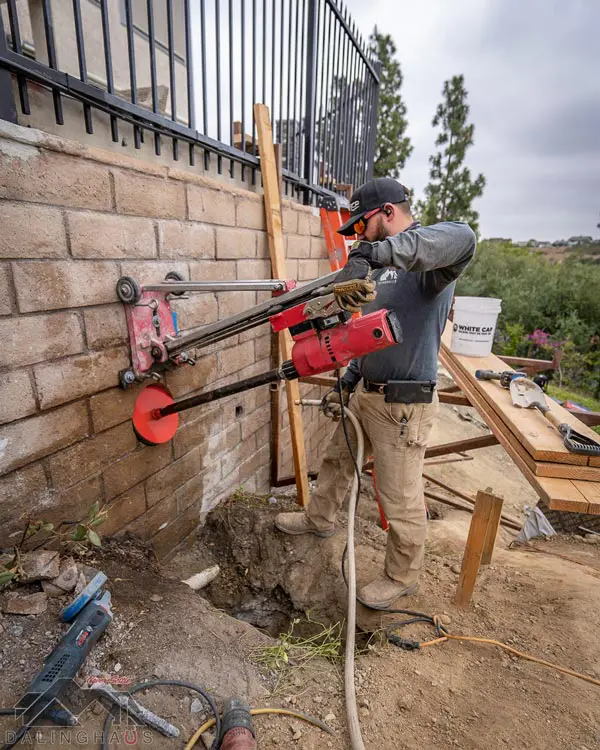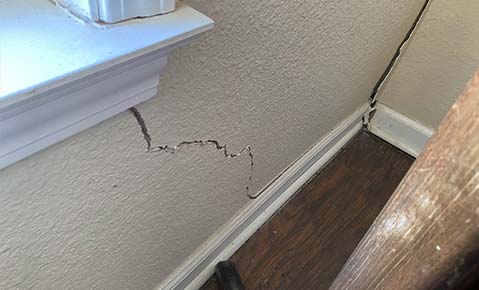Whether you have a sloping landscape or want to create a garden space, retaining walls can help provide stability and prevent soil erosion. This article will explore the basics of retaining walls, why homeowners might need one, how they work, how they are built, common problems associated with retaining walls, and repair solutions for failing retaining walls.
What Is a Retaining Wall?
A retaining wall is a structure constructed to hold soil back. Retaining walls are commonly used to prevent soil erosion, for landscaping, and to create a level space on a sloping property. They can be built using concrete, stone, brick, and timber. Regardless of the material, retaining walls must be engineered and installed correctly to provide long-term stability.

Why You Might Need a Retaining Wall
Homeowners might need a retaining wall for numerous reasons, including the following:
- To prevent soil erosion – One of the main reasons is to prevent soil erosion and stabilize a slope.
- To create a level area – Retaining walls can also be used to create a flat, level area for building a patio, garden bed, driveway, etc. For homeowners with a sloping driveway, retaining walls can reduce the grade and make it safer to drive or park on.
- To help correct drainage issues – Retaining walls help manage water runoff by redirecting it away from buildings and other structures.
How Do Retaining Walls Work?
Retaining walls are structures constructed to hold back soil, rock, or any other loose material. They are commonly used in landscaping, civil engineering projects, and road construction to stabilize slopes and prevent soil erosion.
Retaining walls can also be used to create additional space for landscaping or other uses, as they can be constructed in various shapes and sizes to match the needs of the surrounding environment.
One of the key factors in the design and construction of a retaining wall is drainage. The wall must be constructed with enough drainage to prevent water from accumulating behind it, which could lead to hydrostatic pressure buildup and potential wall failure. Proper drainage is also essential for preventing erosion and other damage to the soil behind the wall.
How Are Retaining Walls Built?
- Perform soil tests – Soil tests must be performed to assess the soil’s bearing capacity and ensure that it can safely support the weight of the wall. The soil composition will determine, to a great extent, the type of wall that will be constructed.
- Determine the wall’s function – The first step in building a retaining wall is to determine the wall’s function and the calculated applied loads that the wall will be required to “hold back”. From there engineers can begin the design for the materials needed to build it.
- Clear the construction area – The chosen location where the wall will be constructed must be cleared of any vegetation, rocks, or debris that could negatively affect the retaining wall’s stability.
- Excavation – After all the preparation, the excavation process can begin. Excavation is one of the most crucial and challenging stages of building a retaining wall. Professionals must consider factors such as groundwater levels, soil type, and proximity to existing structures. Sometimes, there is a need to remove or relocate existing drainage channels, utilities, or other infrastructure elements.
- Build the wall’s foundation – Once the excavation is done, the foundation is laid. The foundation is usually made of reinforced concrete. The thickness and depth of the foundation depend on the expected weight that will be supported and the soil composition.
- Construction begins – With the foundation in place, the construction of the wall can begin.
- Completion – After the retaining wall has been completed, the backfilling process consists of installing a layer of geotextile fabric (a synthetic material that prevents soil erosion) and then compacting it with granular soil behind the wall.

As the wall is being built, drainage is managed through weep holes, which will release any accumulated water and prevent it from building up behind the wall. Drainage systems, such as V-Ditches and French Drains are also installed behind and above the wall structure to ensure water can be diverted..
Building a retaining wall requires specialized training and skill, as it involves carefully positioning and placing each block. For the wall’s design, there are different options for the materials used, such as concrete, brick, stone, or wood, depending on the desired appearance and structural requirements. In terms of appearance, concrete blocks are often the most popular choice due to their varying shapes, sizes, colors, and textures.
Common Problems With Retaining Walls
The most common problems with retaining walls include bulging, leaning, cracking, and tilting. These issues can be caused by poor construction, soil movement, or water pressure. Over time, retaining walls may show signs of wear and tear, leading to deformation and collapse. Homeowners must take these problems seriously and address them promptly.
Repair Solutions for a Failing Retaining Wall
A failing retaining wall can usually be repaired using wall plate anchors or helical tieback anchors.
Wall plate anchors
Wall plate anchors are steel plates attached to the wall with metal rods drilled deep into the soil behind the wall. The anchor transfers the force from the bulge or crack in the wall to the anchored plate, which holds it in place. This method is used for smaller retaining walls and can be installed without extensive excavation.
Helical tieback anchors

For the bigger retaining walls, helical tieback anchors are used. They are installed by drilling a helical anchor, a hollow steel shaft with a helix-shaped plate at the end, into the soil behind the wall at a horizontal angle. The helix plate is then screwed into the ground, providing tension and support for the retaining wall. The process is repeated until all the necessary anchors are installed, creating a wall stabilization system that reinforces the wall’s foundation.
Retaining walls can provide stability and prevent soil erosion, making them a crucial part of many landscapes. Whether constructing a new retaining wall or repairing an existing one, it’s important to work with professionals who understand the structural design, material requirements, and drainage needs of retaining walls.
If you’re interested in installing a retaining wall or need maintenance or repair services, contact us today to schedule an evaluation and receive an estimate. We serve Southern California, Arizona, and Nevada.






